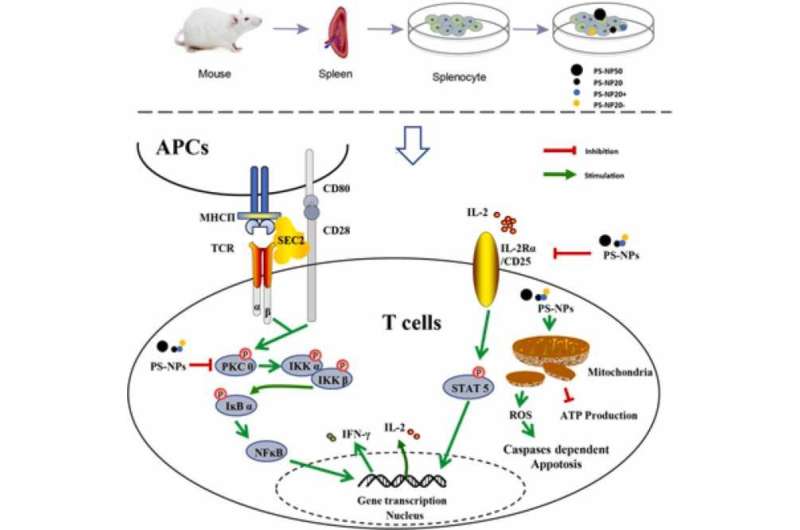Credit: DOI: 10.1016/j.jhazmat.2021.127508
Nanoplastics comprise a new type of environmental pollutant. Plastic particles can easily enter the bodies of animals through diet and breathing, and affect the physiological functions of organisms.
Though vulnerable to nanoplastics, immune cells are an important line of defense against foreign antigens. However, little is known about the toxic effects of nanoplastics on immune systems of mammals.
Recently, a research team led by Prof. Xu Mingkai from the Institute of Applied Ecology (IAE) of the Chinese Academy of Sciences examined toxic effects and underlying mechanisms of polystyrene nanoplastics (PS-NPs) on immune cells.
The researchers found that PS-NPs of different surface charges and varying particle sizes could all enter splenic lymphocytes of the mouse, decrease cell viability at high concentrations, and induce cell apoptosis.
However, positive, negative and uncharged nanoplastics exerted the toxicity in different ways and degrees, while nanoplastics of certain sizes could penetrate into cells more efficiently.
They found that PS-NPs inhibited a number of key signaling pathways that are responsible for the activation and differentiation of T lymphocytes (e.g., CD8+ T cells), thereby affecting their immune function.
These findings could be beneficial for predicting the ecological risk of nanoplastic pollution.
More information: Yuqi Li et al, In vitro study on the toxicity of nanoplastics with different charges to murine splenic lymphocytes, Journal of Hazardous Materials (2021). DOI: 10.1016/j.jhazmat.2021.127508
Journal information: Journal of Hazardous Materials
Provided by Chinese Academy of Sciences
























